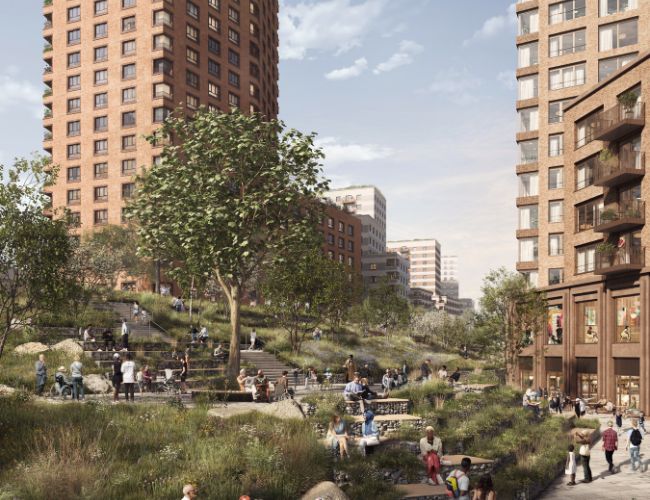Get in touch
Call us:
London +44 (0) 203 370 6804
Manchester +44 (0) 161 870 0400
Email us at enquiries@fecil.uk
Follow us on X, linkedin and instagram
Or contact us to send us an enquiry.

Far East Consortium (FEC), the developer behind Manchester’s Victoria North joint venture partnership with Manchester City Council, has submitted two planning applications to progress its vision for the city’s emerging Red Bank neighbourhood.
The planning applications set out FEC’s ambitions to transform over 30 acres of largely brownfield site into a vibrant neighbourhood of 4,800 new homes alongside commercial and social facilities to support the local community. The plans represent one of the largest residential planning applications to come forward in Manchester in recent years.
Red Bank is one of the first of seven neighbourhoods being regenerated as part of Victoria North, which will create 15,000 new homes over the next decade.
The submissions follow an extensive design and consultation process to develop a masterplan for the neighbourhood centred on FEC’s Wild Urbanism concept, which prioritises green space, biodiversity, active travel and public realm alongside city centre living. The proposals have been developed in partnership with Copenhagen-based public realm specialist, Schulze+Grassov, and masterplanner, Maccreanor Lavington.
Outline planning application
An outline planning application proposes up to 3,250 of the new homes and more than 160,000 sq ft of non-residential floor space including commercial uses, a health centre, primary school, residential amenities and community spaces. The outline proposals also include the creation of new public realm with extensive areas of landscaping, greenspace and wetlands; supporting a minimum 10% biodiversity net gain across the neighbourhood.
Detailed planning application for Dantzic Street
Alongside the outline planning application, a full planning application is also being submitted for three plots on Dantzic Street, adjacent to FEC’s 634- home Victoria Riverside scheme, which will form the developer’s next phase of delivery.
The proposed scheme of 1,550 homes will see the construction of seven buildings varying in height between 6 and 34 storeys designed by Manchester-based architect, Hawkins\Brown, and Maccreanor Lavington’s Rotterdam studio. It will bring to market a mix of one, two and three-bed apartments and townhouses catering for a diverse mix of type and tenure of homes including build to rent (BTR), affordable and open market sale. The buildings have been designed with energy efficiency measures including low carbon and renewable technologies.
The proposals will also support a new high street, including 20,000 sq ft of commercial and retail space earmarked for local independent businesses. The detailed proposals also feature high quality public realm, including extensive landscaping and significant improvements to the streetscape of Dantzic Street and Dalton Street with tree planting, resurfacing, widened footpaths and new cycle lanes.
Hilary Brett, project director at FEC, said: “Red Bank is a unique area of the city, with the existing natural assets of the River Irk and St Catherine’s Wood, as well as being home to some fantastic businesses in the railway arches. There is huge opportunity to enhance what already exists and to create a vibrant neighbourhood. We want to integrate and re-connect Red Bank with the city centre to transform the area into a desirable place to live and visit. Our proposals are the outcome of over 18 months of design development and community engagement, and we hope the plans are positively received.”
Cllr Gavin White, Manchester City Council’s executive member for housing and development, said: “Red Bank represents an incredibly exciting phase of the long-term investment into the Victoria North area – bringing brownfield land back into use for new housing, cleaning up the River Irk and investing in new parks and green spaces in the lower River Irk valley.
“This area at the edge of the city centre is a challenging prospect, but these planning applications are part of an ambitious vision for this new neighbourhood and community, bringing thousands of new homes, investment and life to a part of Manchester that has been underused for many years.”